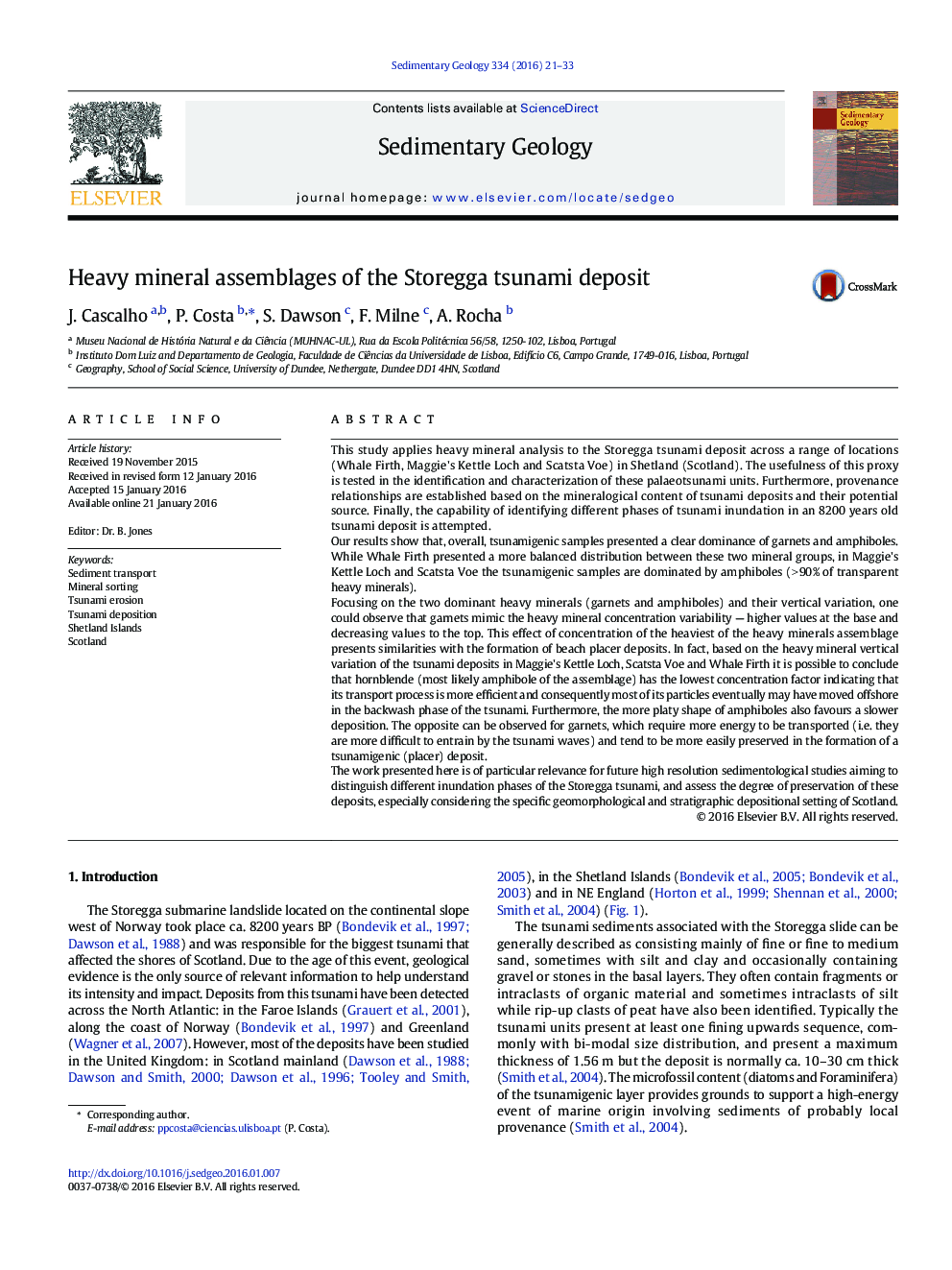| کد مقاله | کد نشریه | سال انتشار | مقاله انگلیسی | نسخه تمام متن |
|---|---|---|---|---|
| 4689075 | 1636029 | 2016 | 13 صفحه PDF | دانلود رایگان |

This study applies heavy mineral analysis to the Storegga tsunami deposit across a range of locations (Whale Firth, Maggie's Kettle Loch and Scatsta Voe) in Shetland (Scotland). The usefulness of this proxy is tested in the identification and characterization of these palaeotsunami units. Furthermore, provenance relationships are established based on the mineralogical content of tsunami deposits and their potential source. Finally, the capability of identifying different phases of tsunami inundation in an 8200 years old tsunami deposit is attempted.Our results show that, overall, tsunamigenic samples presented a clear dominance of garnets and amphiboles. While Whale Firth presented a more balanced distribution between these two mineral groups, in Maggie's Kettle Loch and Scatsta Voe the tsunamigenic samples are dominated by amphiboles (> 90% of transparent heavy minerals).Focusing on the two dominant heavy minerals (garnets and amphiboles) and their vertical variation, one could observe that garnets mimic the heavy mineral concentration variability — higher values at the base and decreasing values to the top. This effect of concentration of the heaviest of the heavy minerals assemblage presents similarities with the formation of beach placer deposits. In fact, based on the heavy mineral vertical variation of the tsunami deposits in Maggie's Kettle Loch, Scatsta Voe and Whale Firth it is possible to conclude that hornblende (most likely amphibole of the assemblage) has the lowest concentration factor indicating that its transport process is more efficient and consequently most of its particles eventually may have moved offshore in the backwash phase of the tsunami. Furthermore, the more platy shape of amphiboles also favours a slower deposition. The opposite can be observed for garnets, which require more energy to be transported (i.e. they are more difficult to entrain by the tsunami waves) and tend to be more easily preserved in the formation of a tsunamigenic (placer) deposit.The work presented here is of particular relevance for future high resolution sedimentological studies aiming to distinguish different inundation phases of the Storegga tsunami, and assess the degree of preservation of these deposits, especially considering the specific geomorphological and stratigraphic depositional setting of Scotland.
Journal: Sedimentary Geology - Volume 334, 1 April 2016, Pages 21–33